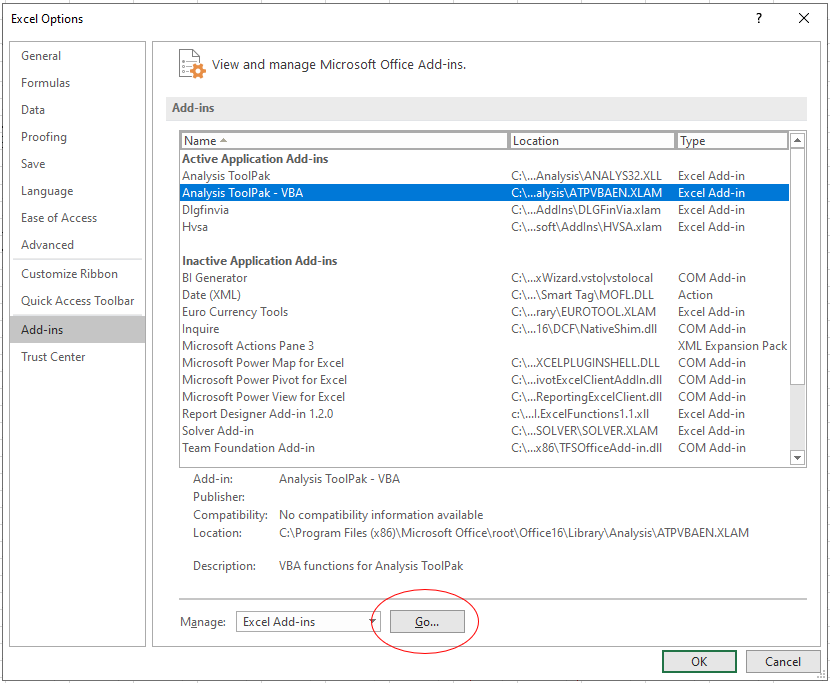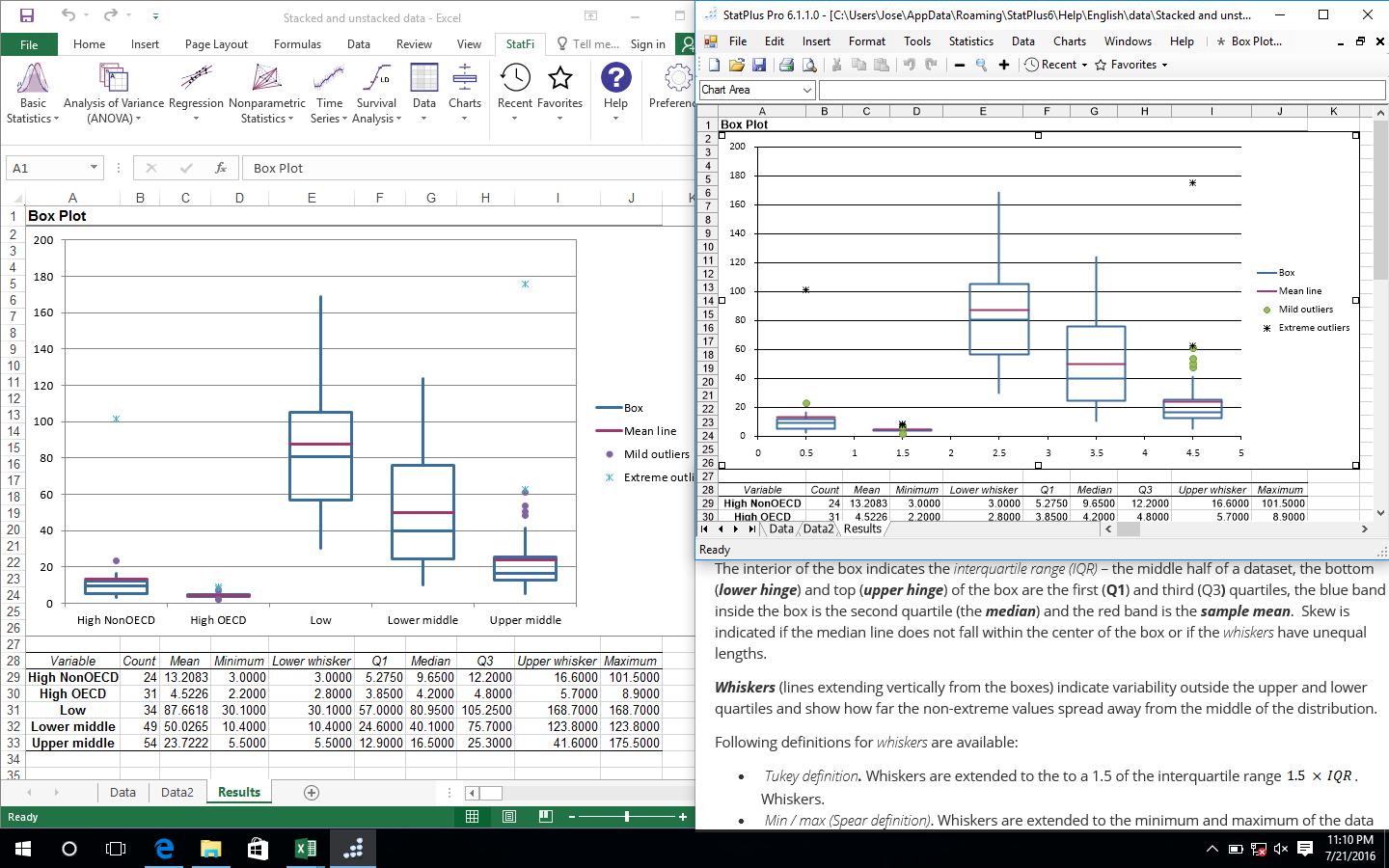


It should be as simple as adopting our schema and passing the schematized values for display and re-use within Excel. We want to make it easy for you as a developer to extend any service and easily expose your data to Excel through your add-in. We are building this API with the world of services in mind. Be sure to take note of the type field, which tells Excel what type a given value is. Here are some quick examples of JSON that adheres to the schema and creates a few types. This allows you to take your flat data and package it up into a logical value, as shown in the following example.Īs noted, the structures are all driven by our schema.
#Microsoft excel add ins data analysis on windows free#
With these value types, you are free to use them as both inputs and outputs for your experiences, and you can also arbitrarily combine them.įor example, you can create an entity value that contains properties of all the types, such as a web image for richer context about the entity, formatted values for things like currencies or dates, arrays of types for lists of data, and even additional entities through nesting. *Only supported as a property of an entity and cannot be a standalone value currently. The following is the complete list of types we’re exposing in this first release: This opens the door to create new experiences and innovate on what is possible with the product today. Additionally, we are allowing you to make use of these types within custom functions. Our focus has been on exposing the structures so that you can bring your data to Excel using our schema and leverage many of the built-in experiences today. One other notable difference is the introduction of a schema that conforms to the types that are available to Excel. If you’re familiar with the Range.values API, this API works similarly The major difference is that this new API can return augmented information about basic types (text, numbers, errors) as well as information about the new data types we have introduced. The first API we’re introducing, Range.valuesAsJson, allows you to both read and write data types. Ultimately, if you need another dimension added to your data, you can make use of our composable types to deliver a truly custom experience for users of your add-in. If you want to assign a given format to a value and have it travel through the calculation engine, you can use formatted values. We have built out data types, inspired by many of the patterns we have seen across all the solutions built in Excel.įor example, if you have a solution that creates another dimension on top of your data, you can make use of a card view. This will reduce the complexity of your add-in and eliminate the need for custom solutions or surfaces that power many add-ins today. With the addition of data types APIs, we want to empower you as a developer to take advantage of many of the experiences we have built that power data types. Linked data types (Stocks, Geography, Wolfram and Power BI), entity values, dynamic arrays, improved errors, images in cells, lambdas, and formatted number values are all new types that have delivered on this promise and back many of the experiences you have seen introduced in the product today. With the addition of data types, Excel has evolved to a world where cells can contain something much richer. Many of these solutions are powered by cells which most often contain (or evaluate to) just text or numbers. Data types More t han just text and numbersĬountless solutions have been built with Excel. Onboard your add-in to the next generation of Excel experiences with data types, and reduce your time to market by reaping the benefits of our deeply integrated feature set. With this new set of capabilities, you can leverage the technology behind data types, which powers the experiences of Wolfram, Stocks, Geography, and other linked data types that can be found in Excel today. This helps solve a key problem developers have today with requirements around metadata associated with cells. We’re excited to announce new capabilities that let you programmatically create your own custom data types within Excel.


 0 kommentar(er)
0 kommentar(er)
